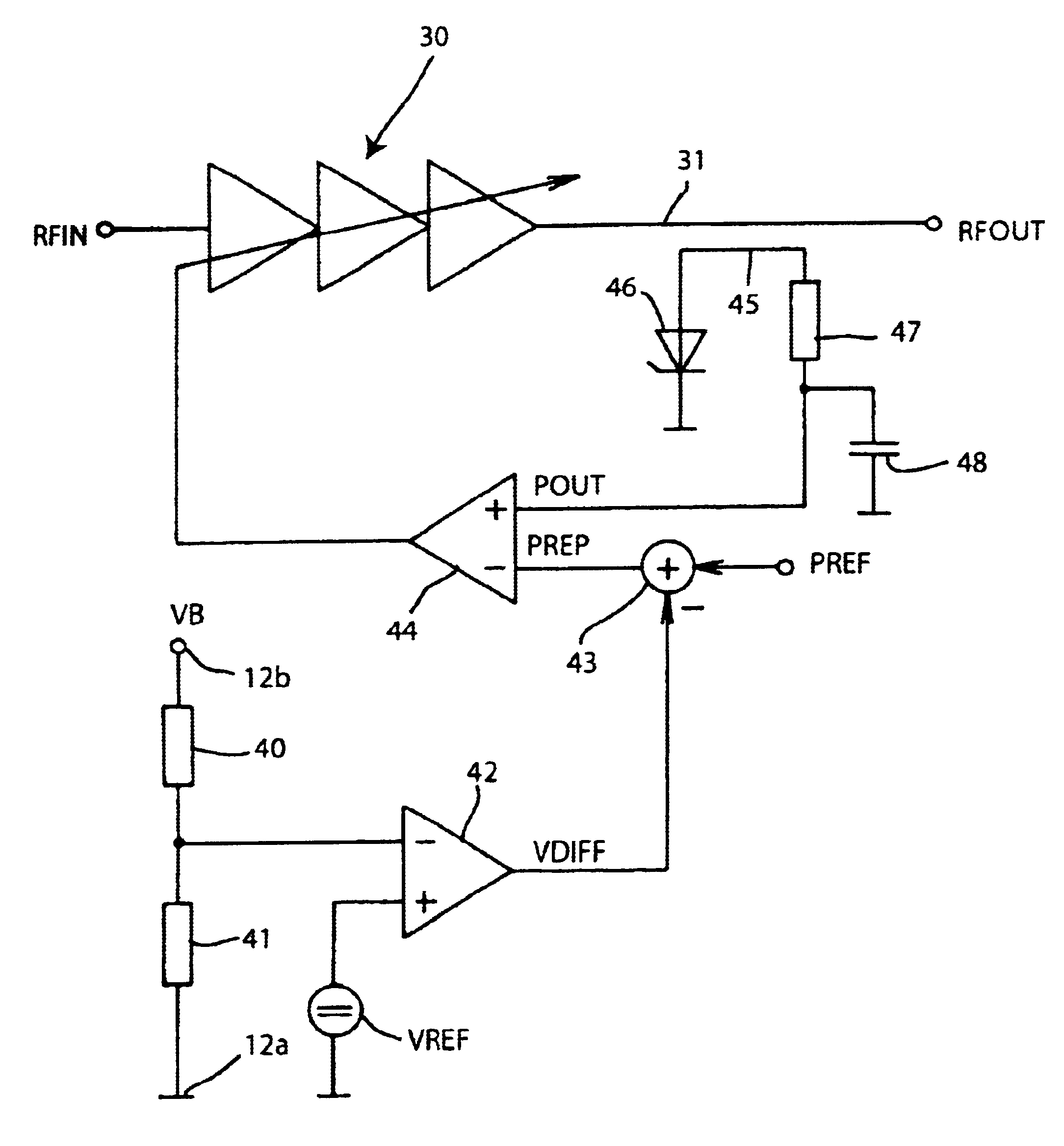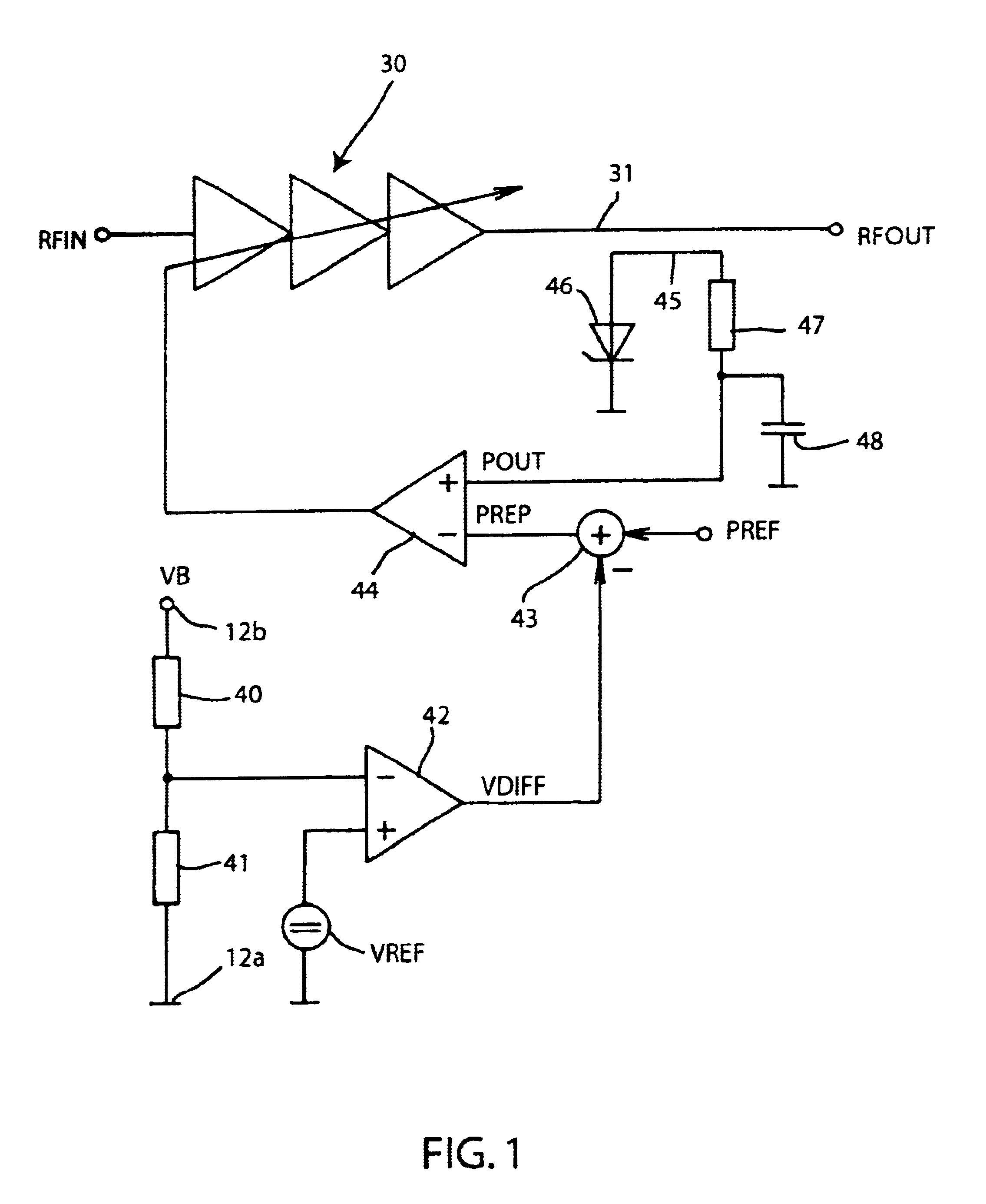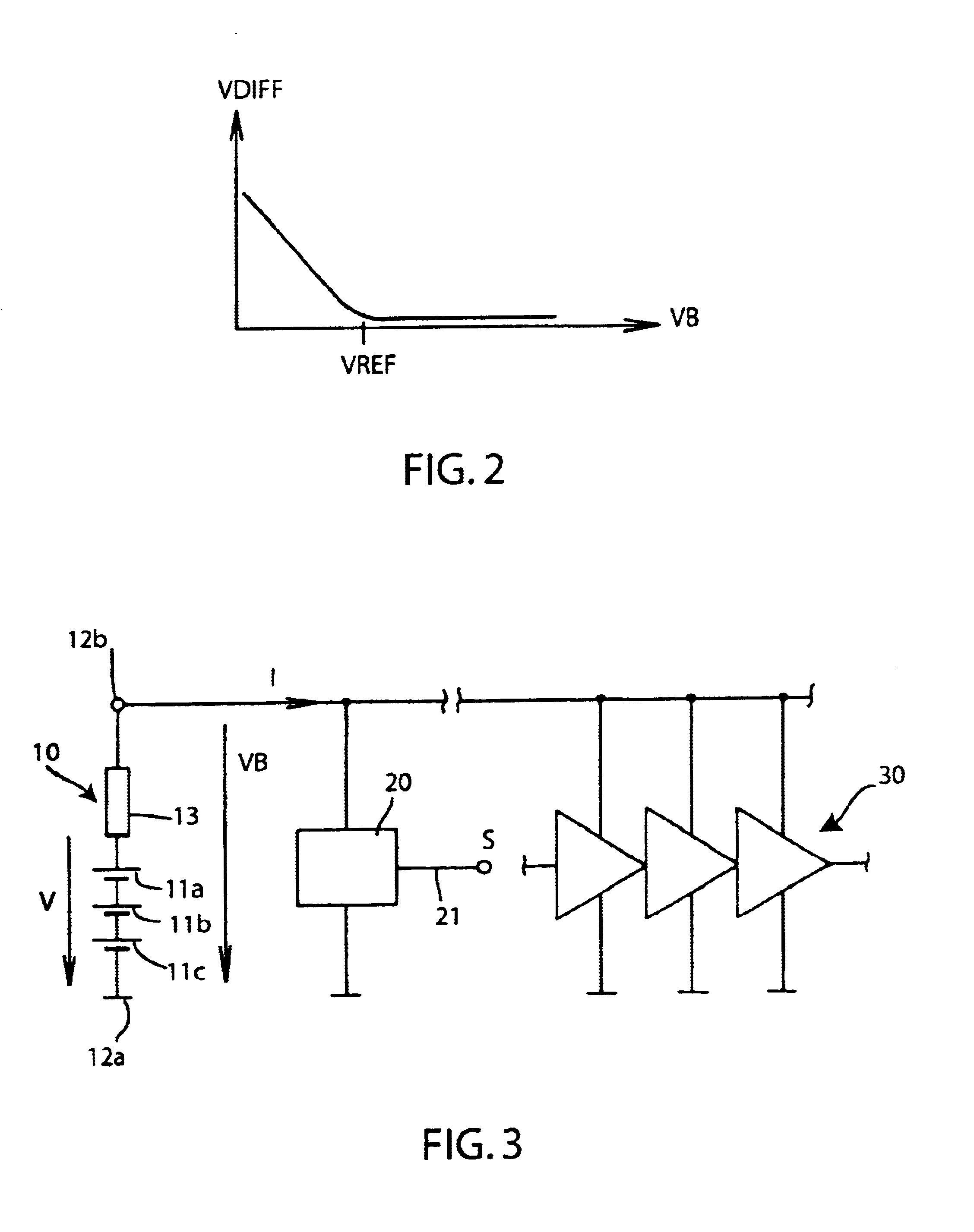Circuit configuration for controlling the transmitting power of a battery-operated transceiver
a transceiver and circuit configuration technology, applied in power management, process and machine control, instruments, etc., can solve the problem of delay in the switching off of the device, and achieve the effect of longer operation tim
- Summary
- Abstract
- Description
- Claims
- Application Information
AI Technical Summary
Benefits of technology
Problems solved by technology
Method used
Image
Examples
Embodiment Construction
WINGS
[0015]FIG. 1 is a schematic diagram of a circuit configuration according to the invention;
[0016]FIG. 2 is a graph showing a characteristic of a comparator of the circuit of FIG. 1; and
[0017]FIG. 3 is a basic schematic and block diagram of a battery of a mobile transceiver with connected loads.
DESCRIPTION OF THE PREFERRED EMBODIMENTS
[0018]Referring now to the figures of the drawings in detail and first, particularly, to FIG. 3 thereof, there is seen a circuit having a battery 10 which includes three battery cells 11a, 11b and 11c that are connected in series. A voltage V is impressed by the three battery cells 11a, 11b, 11c. The voltage V drops as the discharging of the battery increases. The battery cells 11a, 11b and 11c are connected in series inside the battery with an internal impedance 13. An operating voltage VB which supplies the mobile transceiver is present at terminals 12a and 12b. A correspondingly high voltage is dropped across the internal impedance 13 depending on...
PUM
 Login to View More
Login to View More Abstract
Description
Claims
Application Information
 Login to View More
Login to View More - R&D
- Intellectual Property
- Life Sciences
- Materials
- Tech Scout
- Unparalleled Data Quality
- Higher Quality Content
- 60% Fewer Hallucinations
Browse by: Latest US Patents, China's latest patents, Technical Efficacy Thesaurus, Application Domain, Technology Topic, Popular Technical Reports.
© 2025 PatSnap. All rights reserved.Legal|Privacy policy|Modern Slavery Act Transparency Statement|Sitemap|About US| Contact US: help@patsnap.com



